Frost ActionAlthough large parts of the Arctic islands are covered by glaciers, the remaining areas mostly consist of frozen ground. Ground that is permanently frozen at depth is known as permafrost, but in summertime the surface thaws out, and many interesting landforms are produced by the freeze-thaw process. Buildings and infrastructure on frozen ground are vulnerable to damage, unless proper precautions are undertaken, although once again climatic change is exacerbating the situation. |
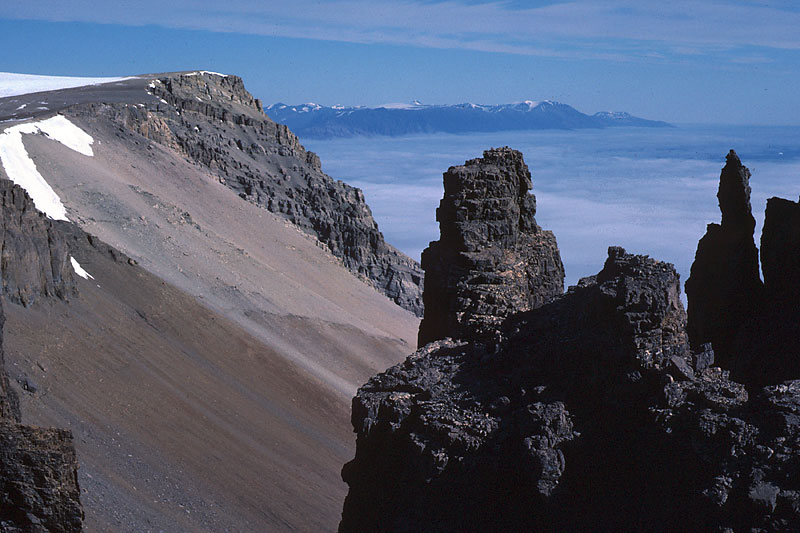 The effects of frost weathering are illustrated in this view of the plateau edge above Kap Weber in East Greenland. On the left, crags are yielding a steady supply of scree material, whilst towers and pinnacles are developing on the right as the plateau edge disintegrates. The scree slopes fall in a continuous sweep down to the fjord waters, hidden beneath the fog bank, over 1000 metres below. | 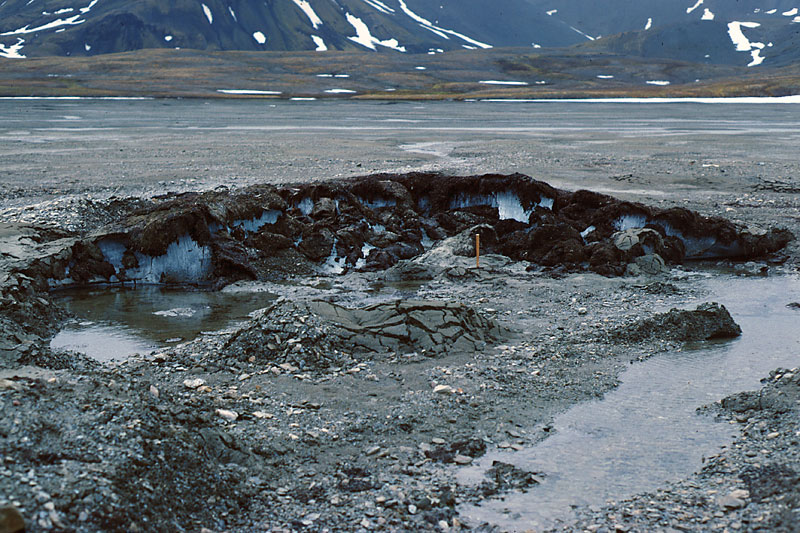 Segregation of ice from sediment by repeated freezing and thawing is a common process on river plains, raising the overlying material into a mound. In this example from Engelskbukta, northwest Spitsbergen, the mound is collapsing as the ice core, now exposed, melts. | 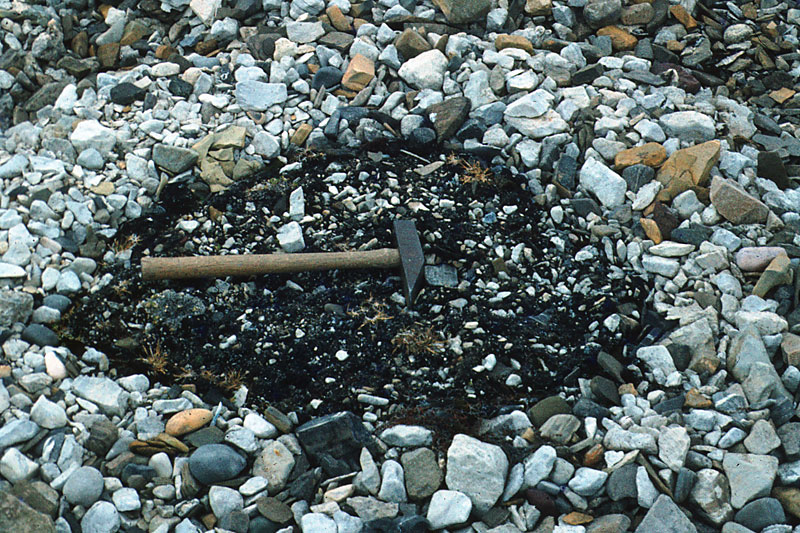 Frost-sorting on level stony ground produces stone circles, such as this one in the Murchisonfjorden area of Nordaustlandet, Svalbard. The outside diameter is approximately 1m. | 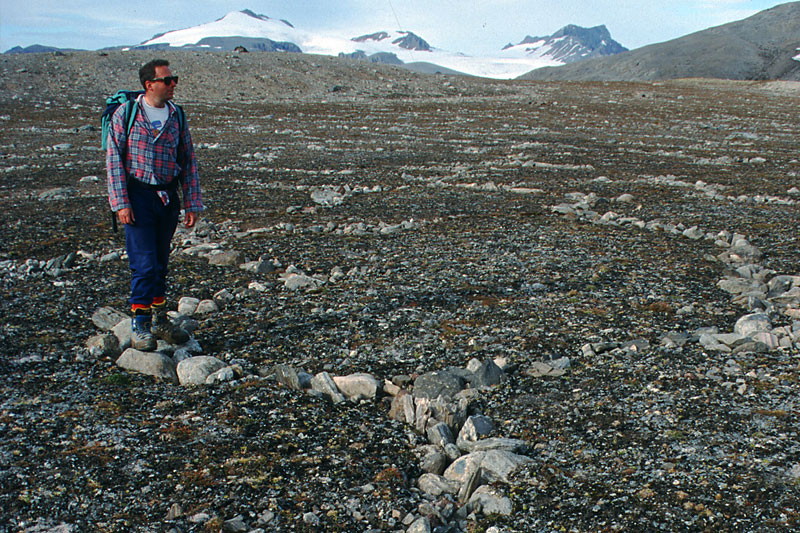 Frost-sorting in areas where snow-melt is trapped and mobilises mud-rich glacial sediment, yields stone polygons as here near the summit of the highest hill on Blomstrandøya in northwestern Spitsbergen. The stone ridges make for firm walking, but boots can be overtopped if they sink into the fine material in the middle of the polygon. |
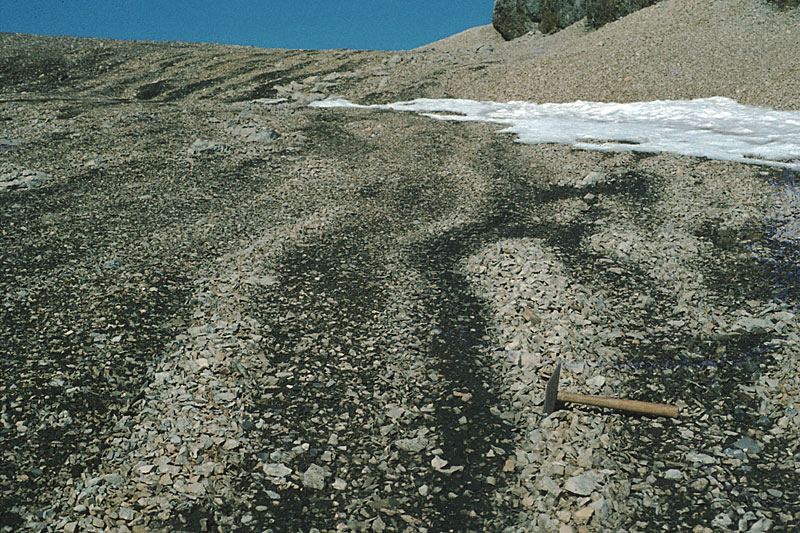 Frost-sorting on slopes results in stone stripes. In this example, in the Murchisonfjorden area of Nordaustlandet, the scree slope provides a steady supply of angular rock fragments, which are then sorted as the material is carried down to the wetter more muddy ground below. | 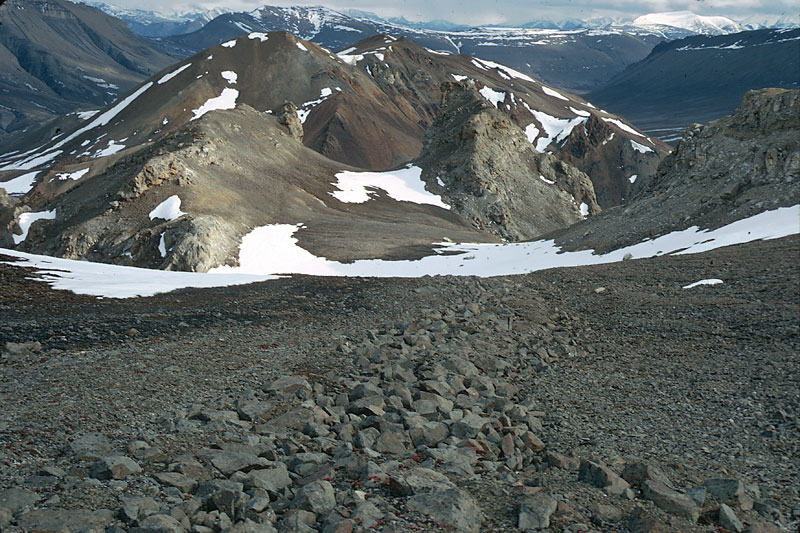 Frost-sorting and meltwater runoff combine to produce a 'stone stream’ of angular cobbles and boulders, a common feature of moderately inclined slopes. Here we are looking downslope at a stone stream on Axel Heiberg Island. | 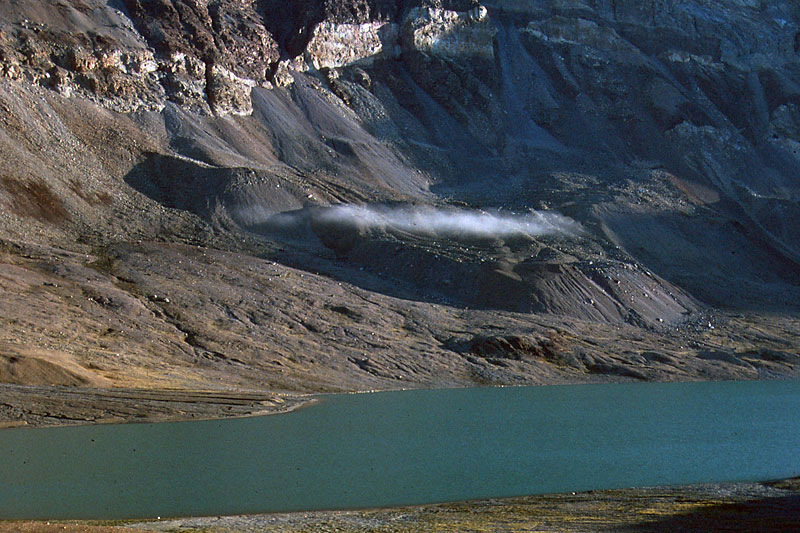 A lobate rock glacier in Brogetdal, East Greenland, developed on actively forming scree slopes. A wisp of cloud floats over the lobe itself. | 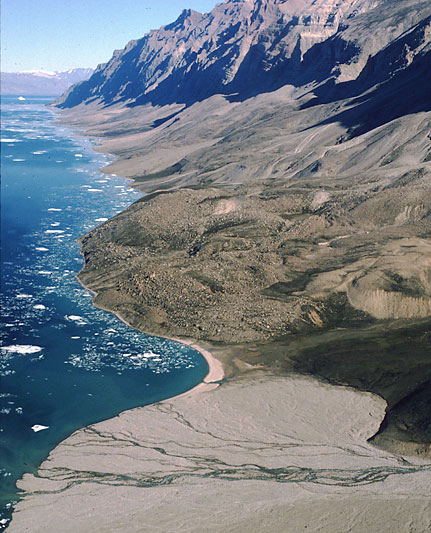 Traill Ø, East Greenland: A rock glacier (centre), scree slopes and small alluvial fans (backgorund), braided surface of a delta (foreground) supplied with sediment from a small river. Coastal processes are reworking the sediment to form beach ridges. |
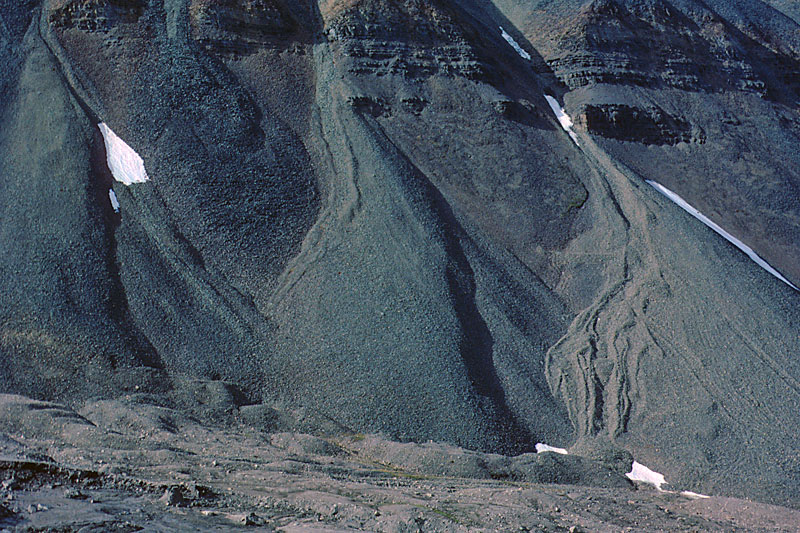 Scree slopes are often modified by water when the winter snow pack that covers them begins to melt. Fast-flowing streams under the snow are confined in channels, and distinctive levées of sediment are developed along their flanks, as here in Bolterdalen, central Spitsbergen. | 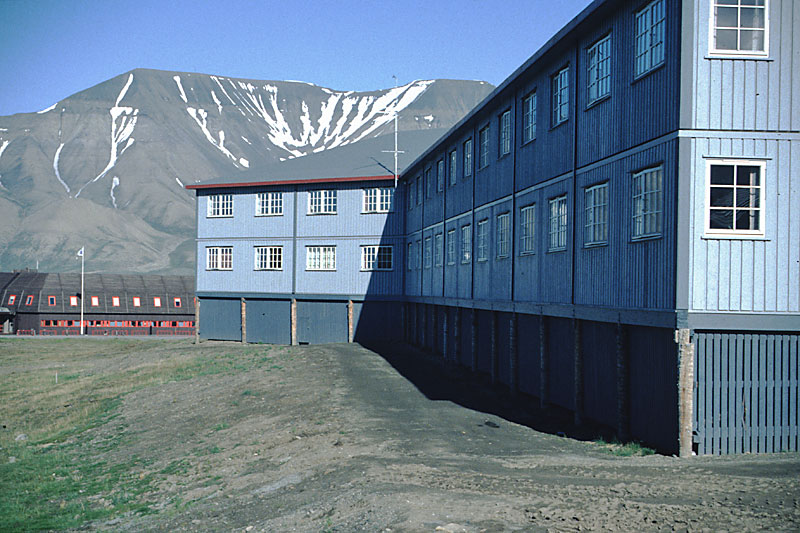 Buildings constructed in areas affected by permafrost need to be insulated from the ground. Tried and tested techniques include placing the building on wooden piles. This photograph shows a corner of the SAS/Radison Hotel in Longyearbyen, Svalbard. Although the area between the piles is boarded off, it is maintained at air temperature as the building above is fully insulated. | 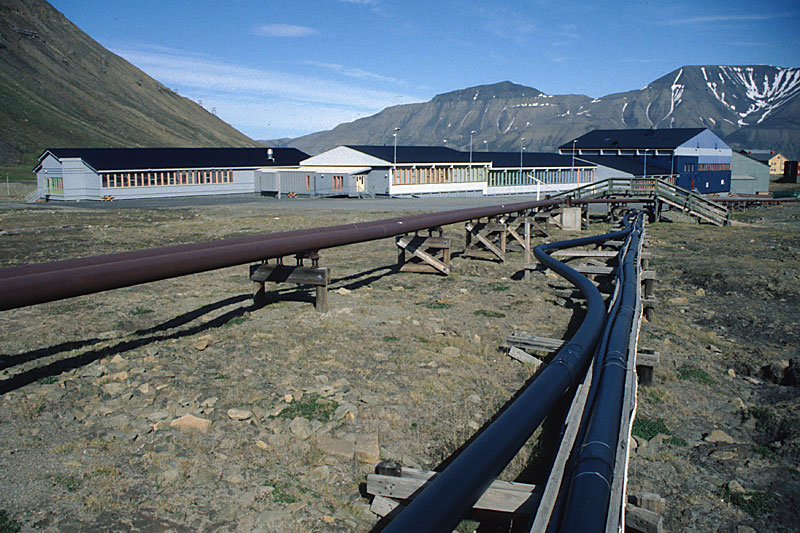 Most services, such as water and sewerage, need to be insulated both from permafrost and sub-freezing winter temperatures. They are commonly placed on wooden stilts above ground level. Thickly insulated plastic piping replaces the old metal conduit near Longyearbyen. Some have a heating element running through them. The bridge serves snow-scooters in winter. | |